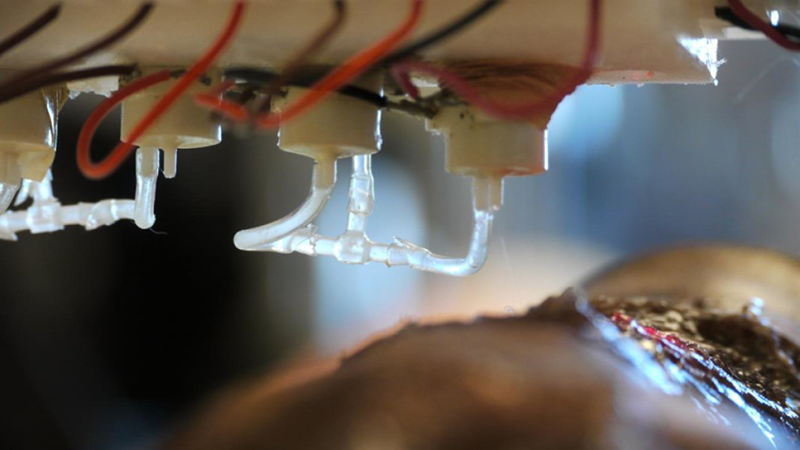Bioprinters are becoming enormously popular in healthcare where they can be used to print various organs of the human body. Now, researchers at Wake Forest Institute for Regenerative Medicine (WFIRM) have created another innovative bioprinter that can be used to heal wounds. The first of its kind handheld bioprinter allows bi-layered skin to be printed directly into a wound.
Related This Smart Bandage Can Monitor Wounds and Deliver Drugs As Needed
“The unique aspect of this technology is the mobility of the system and the ability to provide on-site management of extensive wounds by scanning and measuring them in order to deposit the cells directly where they are needed to create skin,” said Sean Murphy, Ph.D., a WFIRM assistant professor who was lead author of the paper published this month in Nature’s Scientific Reports journal.
Chronic, non-healing wounds affect millions of Americans. They are also costly because they often require multiple treatments. Approximately 10 to 30 percent of combat casualties in conventional warfare for military personnel are burn injuries.

The new technology, which is still at the proof-of-concept stage, consists of mixing major skin cells involved in wound healing with a hydrogel and then placing them in the bioprinter. The system then proceeds to create skin layers.
It also scans the wound so as to apply the newly-printed skin exactly where it is needed. Basically, this technology imitates skin’s natural healing but faster and perhaps even more efficiently.
The researchers published the findings in the journal Scientific Reports where they report that the wounds treated with their bioprinter showed rapid wound closure, reduced contraction and accelerated re-epithelialization.
Related This ‘OLED Patch’ Will Heal Your Wounds Anywhere and Any Time
“The technology has the potential to eliminate the need for painful skin grafts that cause further disfigurement for patients suffering from large wounds or burns,” said WFIRM Director Anthony Atala, M.D., and a co-author of the paper. “A mobile bioprinter that can provide on-site management of extensive wounds could help to accelerate the delivery of care and decrease costs for patients.”












